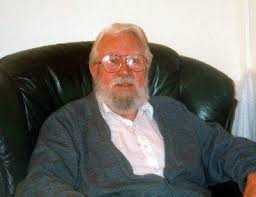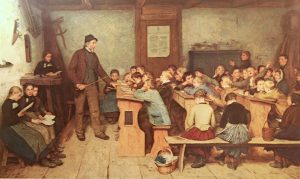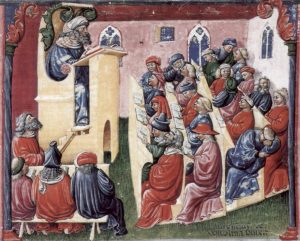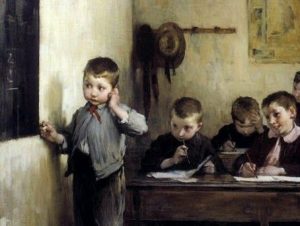C.J. Dodson developed the Bilingual Method of Teaching English between 1967 and 1972. He did as a counterpart to the Audiovisual Method.
After reading “The Structural Approach”, you can check important issues for ESL teachers on the section PDFs, and visit my channel on YouTube.
He also had in mind the Direct Method. Because of that and having in mind that one of the biggest problems with the Direct Method is providing the meaning of words. He amid the Bilingual Method to try to establish meaning immediately, using the L1 and, in the initial stages, the printed word.

In audio-visual courses basic dialogues are presented and practised over several months on a purely oral basis. Dodson, however, proposed a well-tested procedure where the printed sentence is presented simultaneously to the oral utterance from the beginning.
Teachers may read out the dialogue to the class just once with books closed, but as soon as they get the class to say the lines after them, books should be open and the class is allowed to glance at the text in between imitation responses as they listen to others, and look up when they speak themselves.

Dodson showed that provided the class is instructed to make the spoken sentence the primary stimulus, the imitation of sentences could be speeded up, without degradation of intonation and undue interference from the printed text.
The Printed Word
Having the printed word to glance at (whilst at the same time relying on the auditory image of the sentence just heard), pupils find it easier to segment the amorphous sound stream into manageable units and so retain the fleeting sound image. The retention benefits of the mutual support of script and sound outweigh possible interference effects (e.g. where ‘knife’ would be pronounced with an initial k-sound by German learners of English).
In both methods the preferred texts are dialogues accompanied by pictures, and orthographical interference is avoided by never asking the student to read aloud.
Experience in classrooms shows that students’ motivation increases with due to comprehension, high retention, and flexible procedure.
Teachers must be fluent in both foreign language and mother tongue, and must develop facility in the steps of the method in order to provide rapid cuing.

The Printed Text
In the Direct Method, the printed text is made available from the very beginning. It is presented simultaneously with the spoken sentence, allowing the students to see the how the words are written. The pictures that come along the sentences help the understanding of the text sentences.
The bilingual method makes use of the traditional three P’s: presentation, practice, production. The three P’s are the three main stages of any language lesson.
The sandwich technique is used avoiding meaningless and hence tedious parroting of the learning input.
The Main Techniques
The sandwich technique involves the following process:
1. Introduce new word or phrase in L2 (English).
2. Give the idiomatic meaning in L1 (Hindi, Portuguese, Mandarin).
3. Repeat the new word or phrase in L2.
This technique and its variations are advocated strongly by Wolfgang Butzkamm, who many view as the heir to C.J. Dodson’s ideas.
Lesson-Cycle
A lesson-cycle starts out with the reproduction / performance of a basic dialogue, moves on to the variation and recombination of the basic sentences (semi-free use of language) and ends up with an extended application stage characterized by the free, communicative exploitation of the previous work.
Well-ordered activities are to take the students up to a conversational level in the shortest possible time.
Teachers may read out the dialogue to the class just once with books closed, but as soon as they get the class to say the lines after them, books should be open and the class is allowed to glance at the text in between imitation responses as they listen to others, and look up when they speak themselves.

Dodson showed that provided the class is instructed to make the spoken sentence the primary stimulus, the imitation of sentences could be speeded up, without degradation of intonation and undue interference from the printed text. Having the printed word to glance at, students find it easier to segment the sound and so retain the sound image. The retention benefits of the mutual support of script and sound outweigh possible interference effects.
Pictures and slides, along with the teacher’s drawings should clarify the meaning of new words and structures.
It also provides the most direct form of access to meaning possible, the oral mother-tongue, at sentence level to give meaning to unknown words or structures.
The Teacher (in English): Would you mind if I brought a friend?
Teacher (in German): Könnte ich vielleicht einen Freund / eine Freundin mitbringen?
The Teacher: Would you mind if I brought a friend?
Students repeat the sentence after him.
In Role of the Teacher in The Bilingual Method of Teaching English
The teacher chooses the closest natural equivalent which accomplishes what probably no other method of somaticizing can do so directly and so sensitively, i.e. conveying the precise communicative value of the utterance. Whereas an isolated word equivalent is neutral in terms of intonation, teachers can now show how the utterance is meant by using their voice and body (intonation, stress, gestures), both for the original sentence and for the equivalent.
The mother tongue thus proves to be the ideal means of getting the meaning across as completely and as quickly as possible. Bringing differences to light, contrasting and comparing, is seen as the most effective antidote to interference errors. Pupils who hear the French ‘Anniversare’ without at first linking it to ‘birthday’ would simply not understand. Dodson was able to show by controlled experiments that a combination of printed word, mother tongue equivalents, and picture strip (for retention of meaning, not for meaning conveyance), can bring a class more quickly to a point where they can act out a basic situation as freely and naturally as possible.
The Bilingual Method continues under careful management with around the clock feedback. It does it, to ensure that the important skills are learned before the final stage of spontaneous language use. All within an integrated lesson cycle.
The Role of the Students in The Bilingual Method of Teaching English
Learners create new sentences by interchanging words and structures learned before. This bilingual technique prevents students from giving ’empty’ answers.
It is a syntactic and semantic manipulation at the same time, a cognitive commitment in mental exercises, which avoid the students from becoming mechanical.
The Mirroring Technique
A literal and often ungrammatical translation, called mirroring, may be added just once if the new structure is not transparent to the learner:
Teacher (in German): Ich will ja nur eine Tasse Tee.
Students (in English) : All I want is a cup of tea.
Teacher (in German): Ich will ja nur eine Tasse Kaffee.
Students (in English): All I want is a cup of coffee.
Teacher (in German): Ich will ja nur eine ruhige Klasse.
Students (in English): All I want is a quiet class.
With the right type of substitutions, the teacher can help the students to perceive the structure as valid and relevant to their communicative needs.
Finally, students make up their own sentences or chain sentences together, and may thus deal into new situations.

The native language (and to some extent the teacher ) is no longer needed, and the exercise becomes monolingual. This stage is called ‘independent speaking of sentences’ and regards it as the vital semi-creative intermediate step to genuine message-orientated communication.
Teaching Time
About one third of the whole teaching-time should be allocated to genuine communicative activities. For every lesson cycle, the transition must be made from role-taking to role-making. Bilingual exercises to foreign-language-only activities. Guided use to free use. From studying the language to studying topics meaningful in their own way. This constant change between focus on linguistic form and its use for message delivery is very important in the method. Bilingual method techniques fit well into a modern communicative approach.
The advantages of The Bilingual Method of Teaching English:
- As the students begin their language learning journey, their destination is visible in their language teacher. The competence and confidence of the teacher as he/she moves from L1 to L2 and back again is a clear model for the student to copy.
- The bilingual method allows easy glossing of difficult words and efficient explanations of points of grammar by using the mother tongue.
- The bilingual method ensures accessibility. Students beginning the daunting task of learning a new language can immediately find a level of familiarity, avoiding the terrors of that “deer in the headlights” stage of acquiring new skills.
- Through the use of the mother tongue, meaning is conveyed efficiently, and the teacher can ensure that concepts have really been grasped by adapting the pace of the lesson accordingly.
- Though the bilingual method employs the students’ native language, it’s important to note that it’s predominantly the teacher who makes use of L1. This distinguishes it from the grammar-translation method which relies more on rote learning and the translation of texts. The bilingual method focuses more on using the language for oral communication. Students won’t be using their native tongue much in the classroom.
- As with the direct method, basic texts make use of picture strips to accompany the dialogue. The bilingual method makes use of the written form of the language from the start. This allows students to begin to see the shapes of words as they repeat them orally.
The challenges of The Bilingual Method of Teaching English
- You need to be bilingual. Firstly, it requires the teacher to be bilingual in both the native language and the target language. No gringos teaching foreigners in distant lands.
- Students may become over reliant on their first language. It can lead to a bad habit of filtering everything through the mother tongue. As language is more than just the simple substitution of one series of coded sounds with another, it is important to avoid this. Careful planning, preparation and reflection on the part of the teacher can ensure this does not happen.
- The teacher needs to fully understand the principles underlying the method. So that it doesn’t turn into a thinly-veiled version of the grammar-translation method. Though grammatical structures are important in this method also, the bilingual method places great emphasis on attaining oral fluency. You’ll need to be extra certain that you maintain this focus in the planning and preparation stage. The principles of presentation, practice and production should ensure that this focus is maintained.
Books
Bilingual Education. Two important projects in the field of bilingual education were organized in Wales during the 1970s. The first was the Schools Council Bilingual Education Projects in Primary Schools. The second was Schools Council Bilingual Education Projects Secondary Schools. These two projects attracted the attention of educationists in various parts of the world where bilingual education is primordial. This book brings together the evaluation by Professor CJ Dodson and by Dr. Eurwen Price. They assess the teaching methodology developed by Professor Dodson, used specifically during the Secondary School Project.
The Bilingual Reform eliminates a mistake of the century: the exclusion of the mother tongue from foreign language teaching. Two ideas are compared theoretically and practically in the book. The first, is that the student learns the language by using them. The second the student uses the L1 to help them learn the new language.
Teaching Intercultural. This book focus on the teaching and learning of intercultural communicative competence in foreign language classrooms in the USA. This book is the first to describe how teachers, might plan and implement innovative ideas based on sound theoretical foundations.
After reading all about The Bilingual Method of Teaching English, you can check my videos on this matter on my YouTube channel and you can check more about methods in the section Methods.






